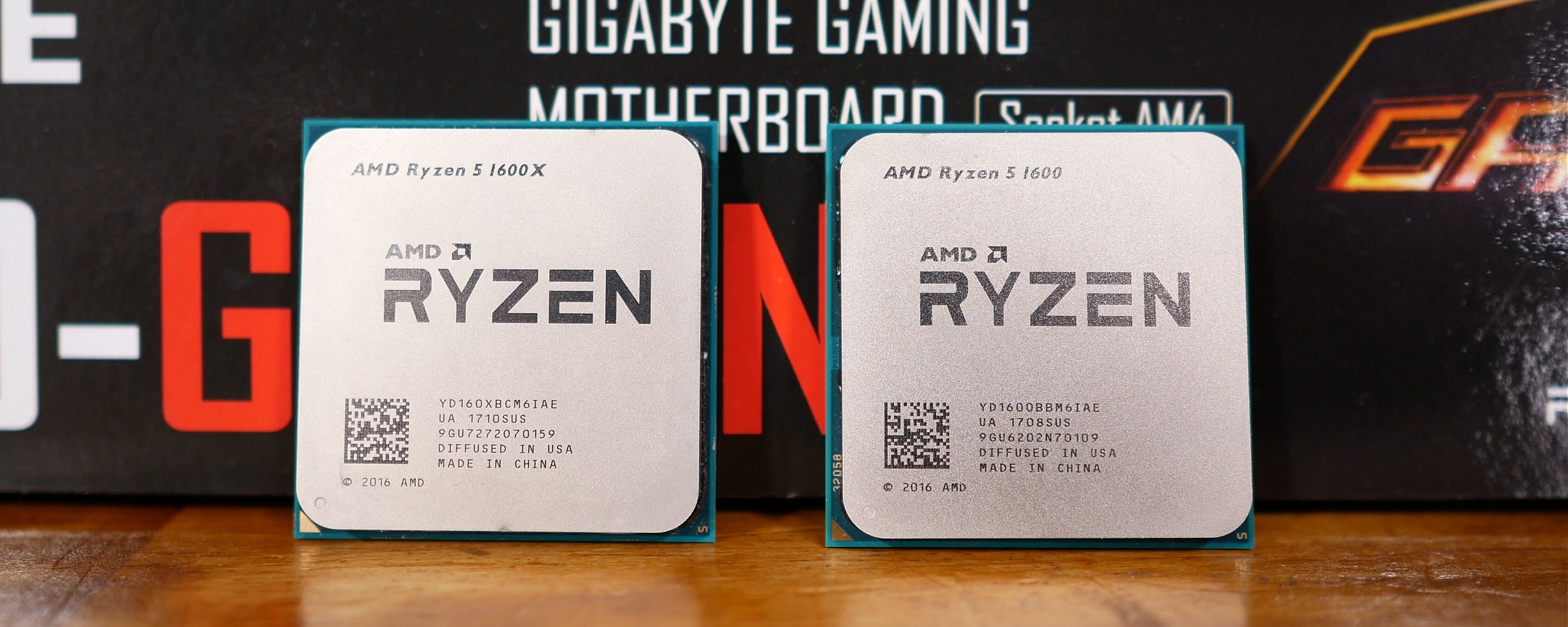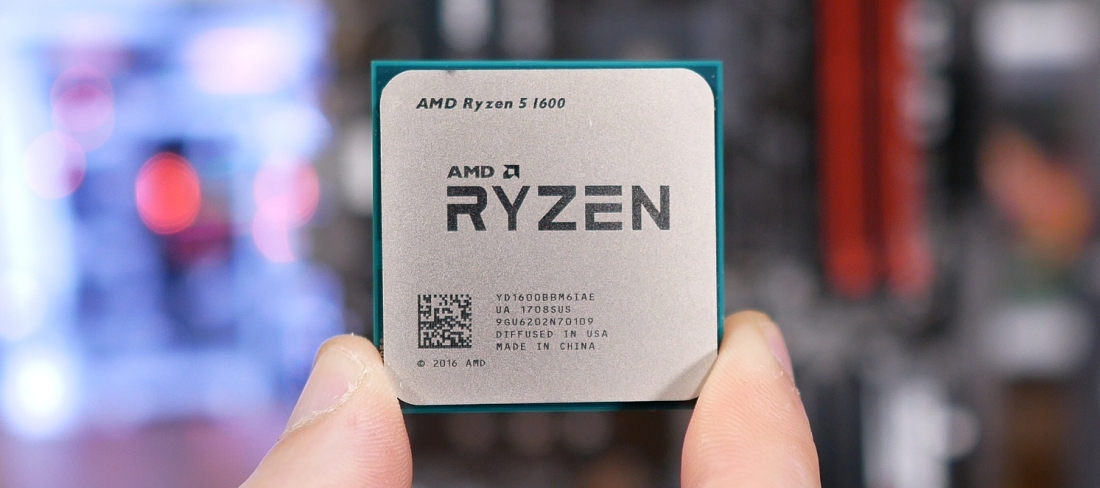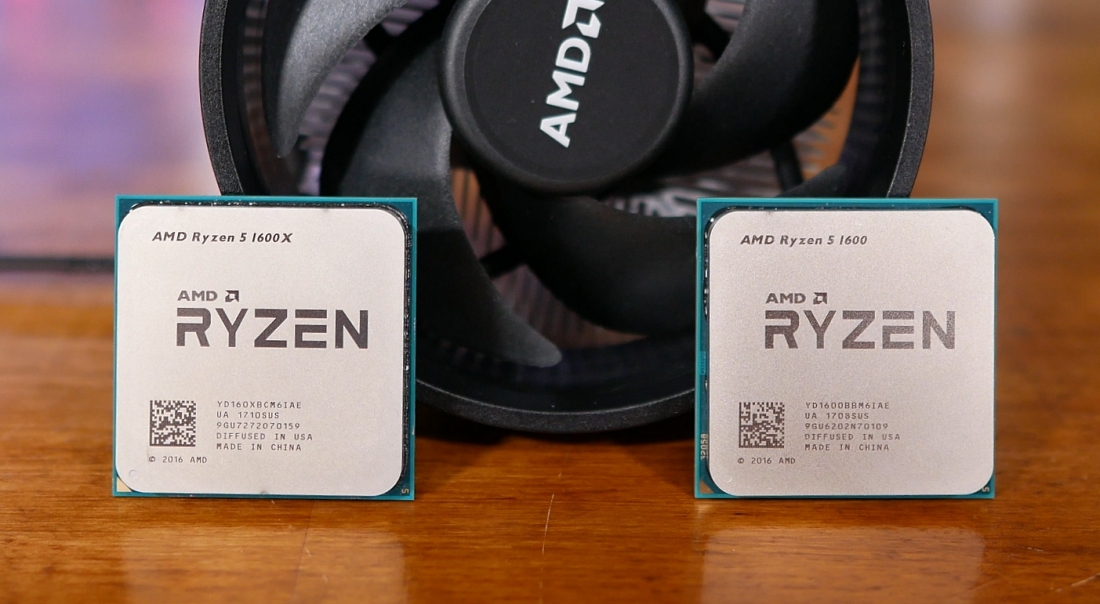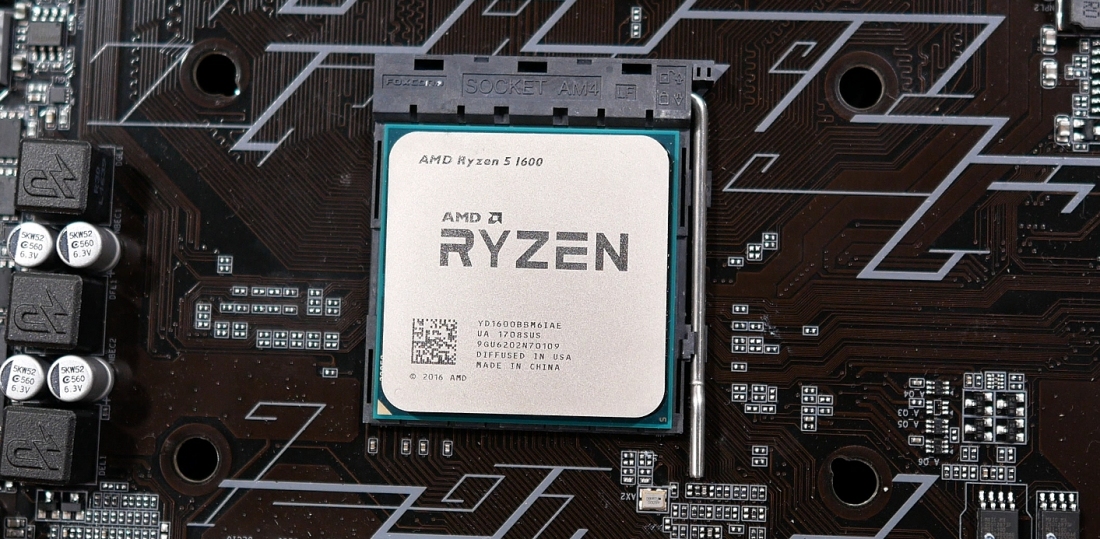The answer to that question may seem obvious to many of you, not least because our Ryzen 5 review said the non-X model looked like a better value. However, we didn't actually have a plain 1600 on-hand at the time, we just assumed based on what we saw with the Ryzen 7 chips that the 1600 would overclock as well, or at least nearly as well as the 1600X.
Although there isn't likely to be a dramatic performance difference between the two chips, the $220 1600 comes bundled with the 95-watt 'Wraith Spire' cooler, while the $250 1600X doesn't come with a cooler at all. If you add the cost of a basic heatsink to the 1600X, the non-X version is around 20% cheaper, yet it shouldn't be more than 10% slower out of the box.
The 'X-rated' 1600X also features "XFR" or Extended Frequency Range, which is basically a beefier version of Turbo that lets the CPU overclock itself a little harder when attributes such as power, current and thermals are within acceptable ranges. XFR is enabled by default on 'X' model Ryzen CPUs, though it's disabled when manually overclocking.
The 1600X has a base clock speed of 3.6GHz, a boost clock of 4.0 GHz and a maximum XFR boost speed of 4.1GHz. However those figures are a little misleading.
For example, boost frequencies will only allow the 1600X to hit 4 - 4.1GHz for single-threaded workloads, whereas the CPU won't actually boost higher than 3.7GHz on multi-threaded workloads, or a mere 3% increase over the base clock.
The 1600 on the other hand operates at a base clock frequency of just 3.2GHz and is advertised to boost as high as 3.6GHz, though again that boost frequency will only be achieved when taxing a single core. However, despite advertising a boost speed of 3.6GHz, stressing a single core in most cases also sees the 1600 exhibit XFR-like gains, allowing it to reach 3.7GHz. Interestingly, it seems like all Ryzen CPUs feature XFR.
The 1600's maximum multi-thread frequency is 3.4GHz, which suggests that for heavy workloads it will only be clocked 8% lower than the 1600X. Of course, these figures will be different if you manually overclock, which is certainly worth considering given that Ryzen CPUs are unlocked and the 1600 can be pushed quite hard with the Wraith Spire box cooler.
We can already say that if you don't plan to overclock, the 1600X is the faster CPU while the 1600 is the better value as it can't be more than 10% slower and yet it's at least 20% less expensive thanks to the included box cooler and lower MSRP.
However, we aren't sure if that story remains true when overclocking, especially if the 1600X offers more headroom. Rumor is, the X-models are capable of greater frequencies and we've seen some evidence of this with the 1700X and 1700, though for the most part the margins were thin.
The 1600X chip we have on-hand for testing had no trouble hitting 4.1GHz at just 1.38 volts and it was even possible to benchmark the system at 4.2GHz after increasing the voltage to 1.5, but AMD recommends a maximum of 1.45 volts for sustained use.
Set at the same 1.38 volts, the 1600 reached 4GHz – not bad – and increasing the voltage a fraction more to 1.4 allowed us to achieve a stable overclock of 4050MHz, only 50MHz shy of what the 1600X managed.
Of course, this could have very easily been around the other way. I just happened to receive a good 1600X. I've seen plenty of reviewers and now users limited to 4GHz with the 1600X, so as always with overclocking, your mileage will vary (4GHz does seem nearly guaranteed, though).
For single-threaded workloads, the manual overclock won't actually be any faster than the stock 4.1GHz XFR performance, but multi-threaded performance should be up to 11% faster for the 1600X and 21% faster for the 1600.
Before moving on, we should note that this isn't an in-depth Ryzen 5 1600 review – in fact, it's not really a review at all. That will come later along with coverage of the quad-core 1400 model.
Instead, we thought it would be interesting to take a detailed look at the performance differences between AMD's six-core Ryzen 5 processors, assuming you're lucky enough to be in the market for a new CPU priced between $200 and $250.
Test System Specs
|
Ryzen 7 System Specs
|
Ryzen 5 System Specs
|
|
Haswell-E & Broadwell-E System Specs
|
Kaby Lake System Specs
|
|
Kaby Lake-K System Specs
|
|
Benchmarks

Something I should note right away is that even with G.Skill's new FlareX DDR4-3200 CL14 memory, the Ryzen 5 1600 was limited to running the memory at 2933. This was the same limitation we faced with the 1500X, so high-speed memory support is still dependent on the CPU. This will hand the 1600X a slight advantage, over the advantage it already had due to those higher clock speeds.
In any case, even with DDR4-2933 memory the 1600 was still good for a memory throughput of 35GB/s.
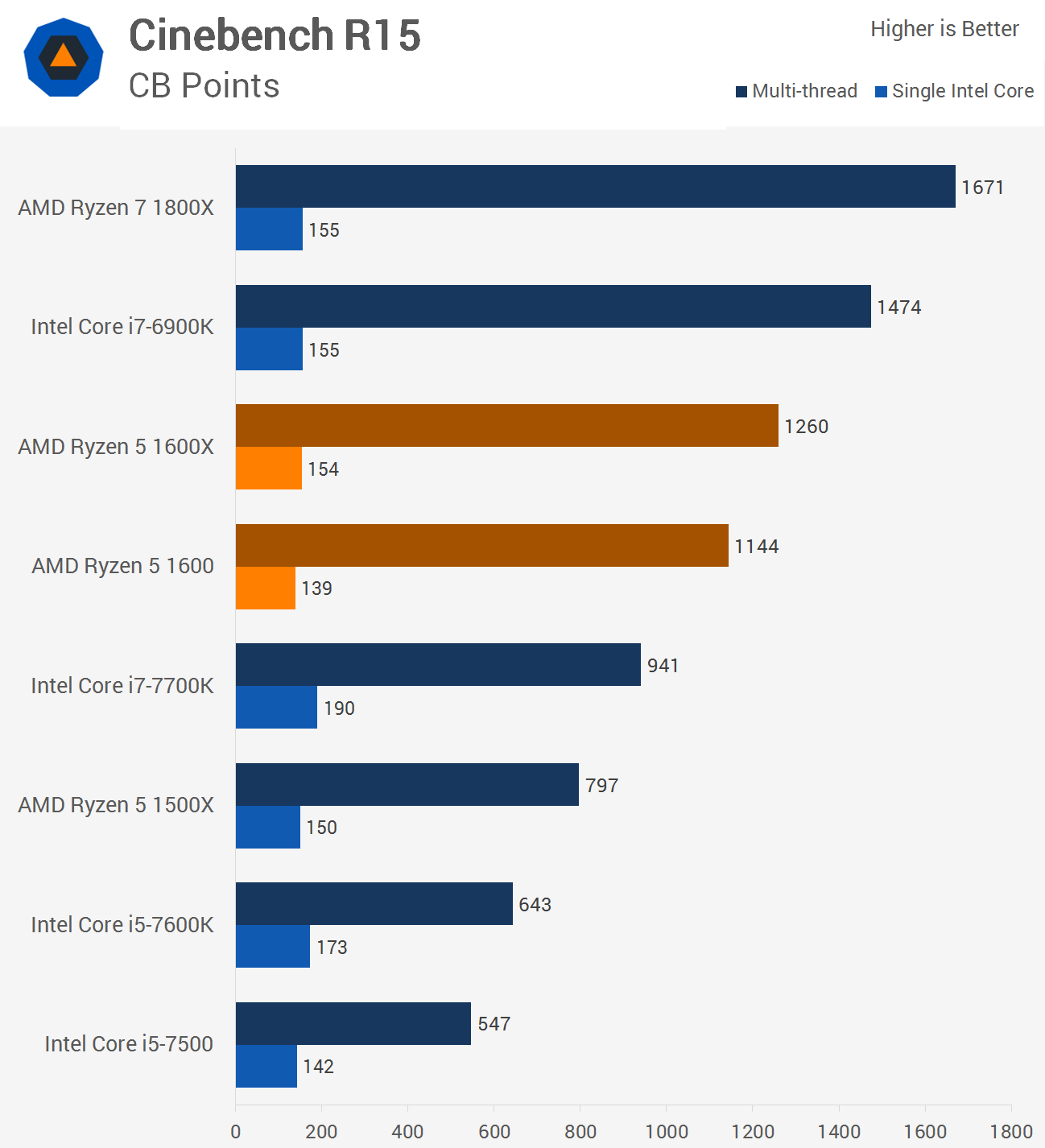
When testing with Cinebench R15, the 1600X is 10% faster in the multi-threaded test and 11% faster in the single-threaded test, which is about what we would expect to see out of the box. Remember the 1600X is clocked 11% higher for single-threaded work and 9% higher for multi, so these figures make sense.

7-Zip provides a glimpse into real world application performance with both the compression and decompression tests using all available threads on the 1600X and 1600. Here the 1600X was around 7 to 8% faster than the 1600, which is in line with what was previously seen in Cinebench and again given the out of the box clock speeds these are the margins we expected to see.

Testing game performance with Hitman we find that the 1600X is just 4% faster than the 1600 when comparing either the average or minimum frame rates. Obviously not a significant difference and it explains why we didn't see many worthwhile gains in most games when overclocking Ryzen.

Ashes of the Singularity: Escalation is the last game I used to compare the 1600 and 1600X. This time we see a mere 2 to 3% performance advantage in favor of the 1600X, so again it looks like you can expect a poor return on investment when buying the 1600X for gaming.

When overclocked, performance is equalized on the Ryzen 5 CPUs. The 1600 fell just 50MHz shy of the 1600X when using reasonable voltages – obviously a negligible difference and as you can see both CPUs allowed the Titan XbigP to average 88fps.
Wrap Up
The Ryzen 5 1600 is the obvious choice as suspected. Between its $220 asking price and bundled cooler, it presents too much of a value proposition to give the cooler-less 1600X much consideration at $250.
All told, with the 1600 CPU and its cooler mounted on an affordable B350 motherboard along with memory such as G.Skill's FlareX DDR4-2400 16GB kit, you have the core components of a killer six-core/12-thread machine for no more than $400.
How much does Intel's Core i7-6800K cost again?
The 1600-based build has even more appeal when you realize that it should overclock to at least 4GHz while our G.Skill RAM reached 2933MHz with relaxed timings.
Looking at it that way, the Ryzen 5 1600 is an exceptional value. As I found earlier in the week, even compared to more affordable CPUs such as the Core i5-7600K, the new six-core Ryzen chips are a much better buy, regardless of what it is you plan to do with them.
However, there's not much reason for anyone to purchase the 1600X over the 1600 as you're only paying more for less. You might be wondering why AMD would release a 1600X at all and I'd say it exists simply to maximize profit.
Shopping shortcuts:
- AMD Ryzen 5 1600X on Amazon
- AMD Ryzen 5 1600 on Amazon
- AMD Ryzen 5 1600X on Newegg
- AMD Ryzen 5 1600 on Newegg
AMD's playing a similar game as Intel with these chips. The difference being that they are doing it without completely taking advantage of enthusiasts who want to save a little money. When it comes to the 1600, you're being rewarded for doing your homework and a little tinkering.
